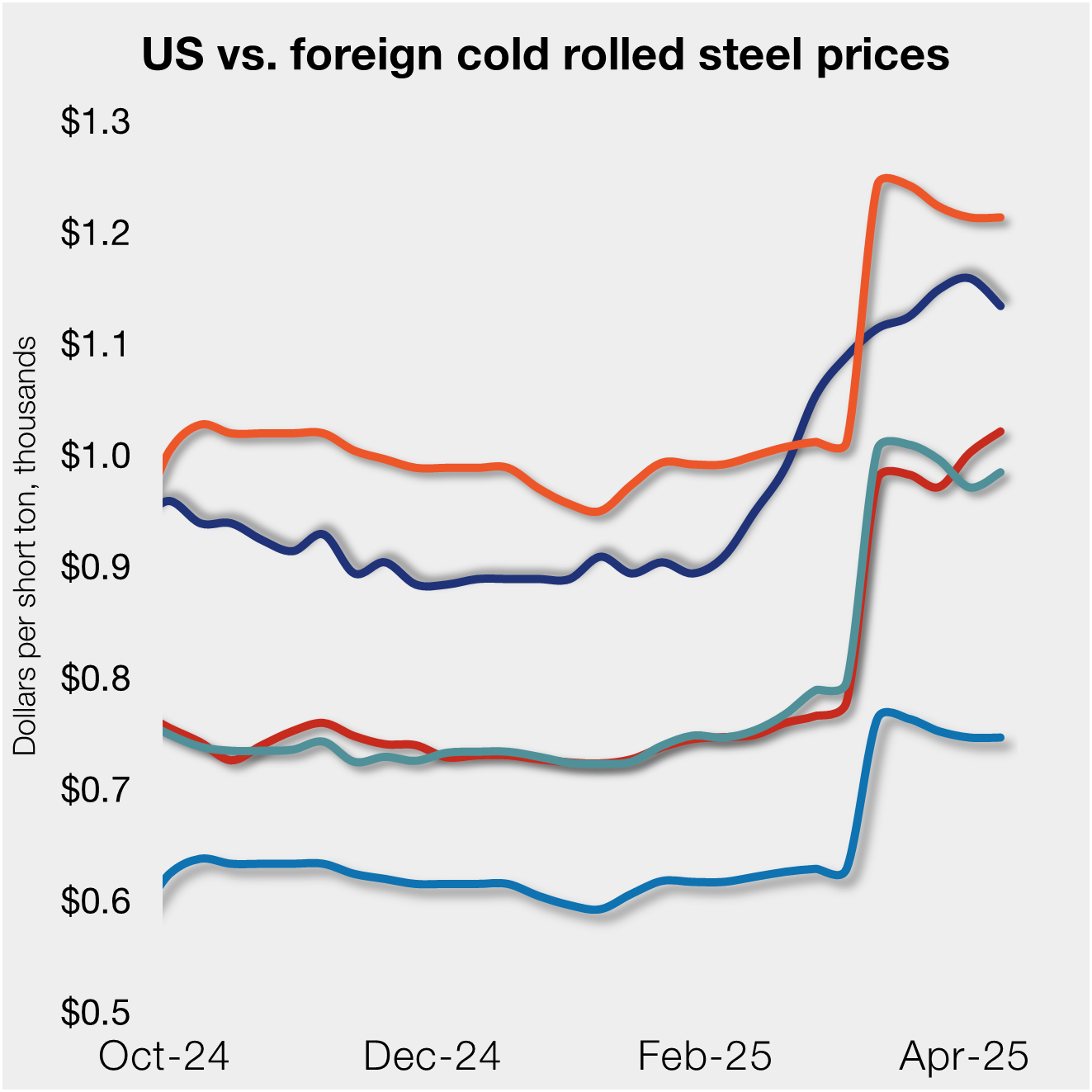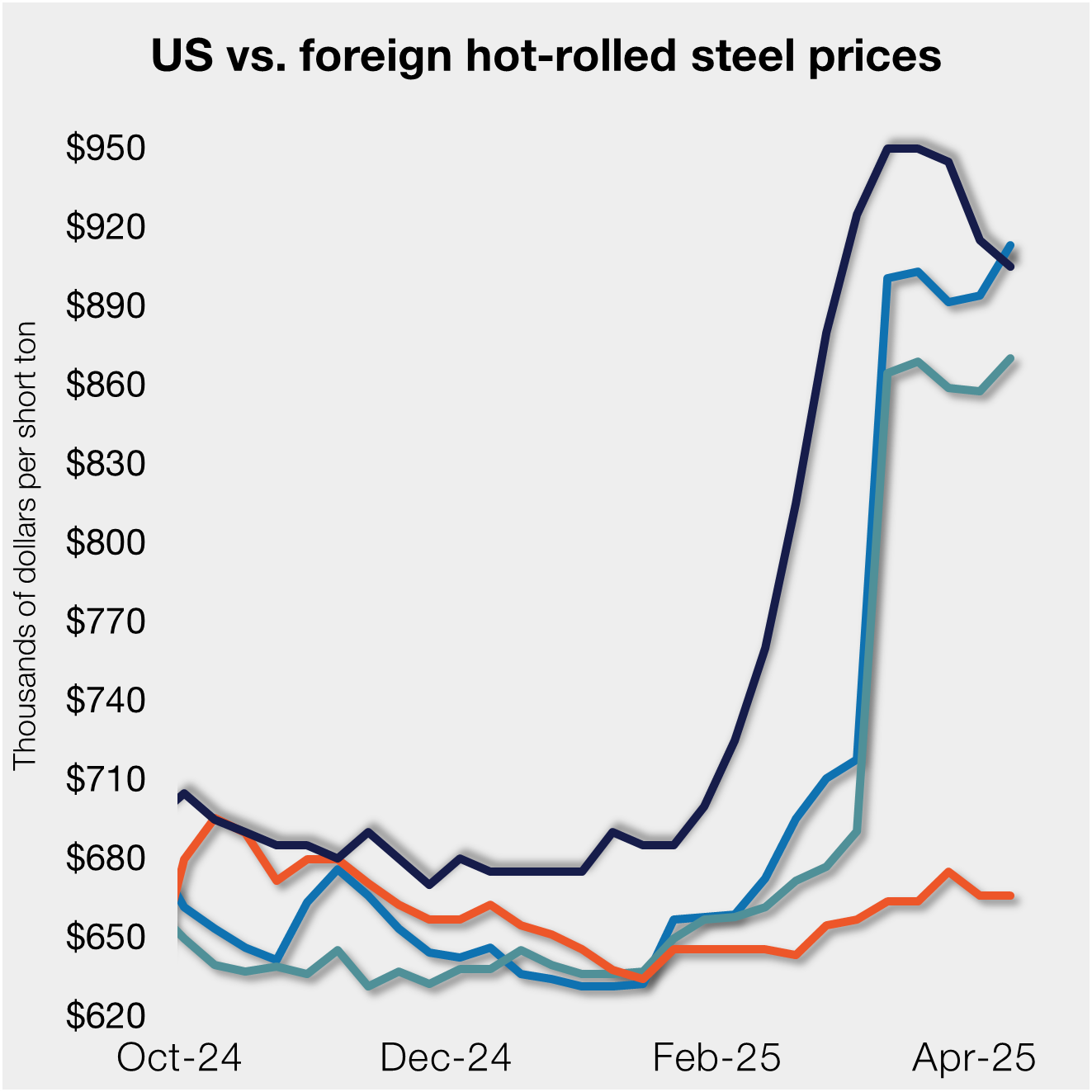Steel Products
Construction Spending Drops in March as Tariffs Impact Demand
Written by Sandy Williams
May 1, 2018
Construction spending dropped from the previous month to a seasonally adjusted annual rate of $1.285 trillion in March, but was still up compared to a year ago, according to an analysis of new Census data by the Associated General Contractors of America. AGC officials blamed the decline on drops in private sector construction as new steel and aluminum tariffs, and resulting price increases, impact demand.
Monthly construction spending declines were noted in health care, commercial, manufacturing and lodging construction. The private sector funding declines were too large to offset the modest increase in public sector funding, particularly for highway and street construction, between February and March, said AGC .
The annual increase in construction spending was due to a 5.3 percent surge in private residential-sector construction spending and a 2.2 percent increase in private nonresidential construction spending. Public construction spending increased by 3.0 percent in March.
“The administration’s new steel tariffs appear to already be having a negative impact on demand for many types of construction services,” said Stephen E. Sandherr, the association’s chief executive officer. “Not only are contractors getting squeezed by higher prices for steel and aluminum products, but it seems many private sector developers are rethinking some investments amid growing fears of a trade war.”
{loadposition reserved_message}
Association officials said they were encouraged by the fact the administration has opted to continue exempting many key trading partners from the new steel and aluminum tariffs the president imposed earlier this year. But they cautioned that continued uncertainty about whether and how long those exemptions will remain in place is contributing to continued price increases for steel and aluminum products that many contractors are being forced to absorb.
“The price increases in steel products that have been introduced since the tariffs were announced have made the different between making money and losing money on many contractors’ projects,” Sandherr said. “That is because firms that bid projects before the tariffs were announced are being forced to pay more than they anticipated for steel products when they submitted their project bids.”

Sandy Williams
Read more from Sandy WilliamsLatest in Steel Products

SMU flat-rolled market survey results now available
SMU’s latest steel buyers market survey results are now available on our website to all premium members. After logging in at steelmarketupdate.com, visit the pricing and analysis tab and look under the “survey results” section for “latest survey results.” Past survey results are also available under that selection. If you need help accessing the survey results, or if […]

CRU tariff webinar replay now available
CRU’s latest webinar replay on how Trump’s tariffs affect the global steel market is now available on our website to all members. After logging in at steelmarketupdate.com, visit the community tab and look under the “previous webinars” section of the dropdown menu. You’ll find not only this special CRU webinar but also all past Community […]

US, offshore CRC prices diverge
US cold-rolled (CR) coil prices declined this week, slipping for the first time since early February. Most offshore markets deviated, moving higher this week.

Construction growth slowed in March on tariff woes: Dodge
The decline comes after reaching a record high in January to kickstart the year.

Return of S232 zapped gap between US and EU HR prices, Asian HR remains cheaper
Domestic hot-rolled (HR) coil prices declined this week for a third straight week. Most offshore markets bucked the trend and gained ground. Uncertainty in the US market around tariffs, especially after “Liberation Day,” caused US prices to slip as buyers moved to the sidelines. It’s unclear to date whether the 90-day pause on the more […]
